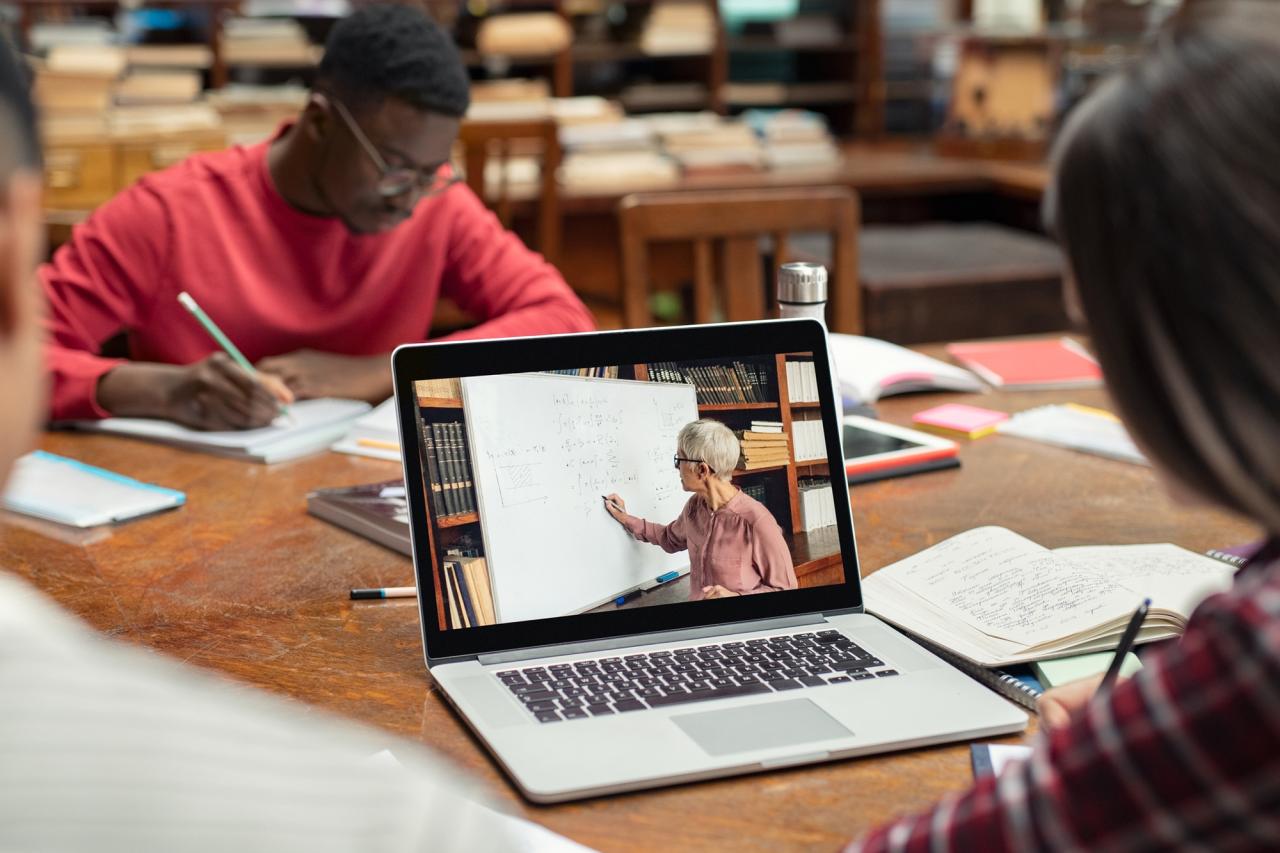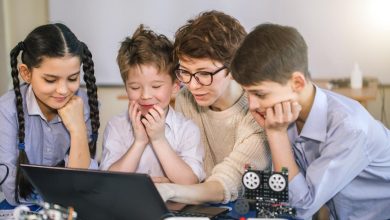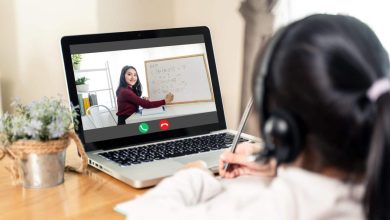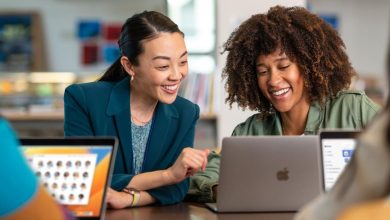Digital Learning Trends What Will Shape Education In The Next Decade

Digital Learning Trends: What Will Shape Education in the Next Decade is an exploration into the transformative forces that are redefining the educational landscape. As we stand on the brink of a new era in learning, it becomes imperative to examine the technological advancements and pedagogical shifts that are paving the way for future generations. From artificial intelligence to hybrid learning environments, educational institutions are embracing innovative strategies that not only enhance teaching but also cater to the diverse needs of students.
This discussion will delve into the evolution of digital learning, highlighting key milestones and emerging technologies that significantly impact how education is delivered and experienced. Furthermore, it will address crucial aspects such as accessibility, inclusivity, and the vital skills needed for learners to thrive in a rapidly changing world.
The Evolution of Digital Learning

The past decade has witnessed a remarkable transformation in the landscape of education, driven primarily by advancements in digital learning technologies. This evolution has not only reshaped the way educators teach but also how students engage with learning materials. Innovative tools and platforms have emerged, facilitating more personalized and interactive learning experiences than ever before.
Technological integration into education has significantly altered traditional teaching methodologies. Classrooms are no longer confined to physical spaces, as digital platforms enable learning to occur anytime and anywhere. This shift has encouraged the adoption of blended learning models, where face-to-face instruction is complemented by online resources. Key milestones over this decade have included the widespread use of Learning Management Systems (LMS), the advent of Massive Open Online Courses (MOOCs), and the incorporation of artificial intelligence (AI) in educational tools, which collectively enhance accessibility and engagement in learning.
Key Milestones in Digital Education Tools and Platforms
The evolution of digital learning tools has been marked by several key milestones that have significantly influenced educational practices. These milestones include the following advancements:
- Learning Management Systems (LMS): The rise of platforms such as Moodle, Canvas, and Blackboard has streamlined course management, allowing educators to create, distribute, and assess learning materials effectively.
- Massive Open Online Courses (MOOCs): Initiated in the early 2010s, MOOCs from providers like Coursera and edX have democratized access to quality education, enabling millions worldwide to learn from prestigious institutions.
- Adaptive Learning Technologies: The introduction of AI-driven platforms such as DreamBox Learning and Smart Sparrow has personalized learning experiences, adapting content to meet individual student needs and pacing.
- Virtual and Augmented Reality (VR/AR): Technologies like Google Expeditions have enriched the learning experience by offering immersive environments, allowing students to explore historical sites or scientific phenomena in a virtual setting.
- Gamification of Learning: The integration of game design elements in educational contexts, as seen in platforms like Kahoot! and Classcraft, has increased student engagement and motivation.
The importance of these milestones lies in their collective impact on accessibility, engagement, and educational outcomes. As digital learning continues to evolve, these advancements serve as foundational elements that shape future educational practices and learning environments.
“Digital learning tools have the potential to democratize education, breaking down barriers and making learning accessible to all.”
Emerging Technologies in Education: Digital Learning Trends: What Will Shape Education In The Next Decade
Emerging technologies are transforming the educational landscape, creating opportunities for enhanced learning experiences and engagement. This transformation is driven by innovations that not only facilitate the delivery of educational content but also personalize learning pathways for diverse student populations. As these technologies evolve, their integration into educational systems presents exciting possibilities for the future of learning.
Artificial Intelligence in Personalized Learning Experiences
Artificial intelligence (AI) plays a pivotal role in creating personalized learning experiences that cater to individual student needs. AI algorithms analyze student data to identify learning styles, strengths, and areas requiring improvement. Through adaptive learning platforms, AI can modify course content and pacing based on real-time assessments of a student’s performance. For instance, platforms like DreamBox and Knewton utilize AI to provide tailored mathematics instruction, adjusting the difficulty of problems according to the student’s mastery of concepts.
Furthermore, AI-powered chatbots and virtual tutors offer immediate assistance, addressing students’ queries and guiding them through complex subjects. This on-demand support fosters a more engaged learning environment and allows for differentiated instruction, ultimately enhancing student outcomes.
Impact of Virtual and Augmented Reality on Student Engagement, Digital Learning Trends: What Will Shape Education in the Next Decade
Virtual reality (VR) and augmented reality (AR) technologies significantly enhance student engagement by creating immersive learning experiences. VR allows students to explore complex environments and scenarios that would otherwise be inaccessible. For example, medical students can practice surgical procedures in a simulated operating room, providing a safe space to develop critical skills. Similarly, history students can experience historical events through VR simulations, fostering a deeper understanding of the subject matter.
AR complements this by overlaying digital information onto the physical world, enriching traditional learning materials. Applications like Google Expeditions enable students to take virtual field trips, enhancing their understanding of topics through interactive exploration. This immersive approach not only captivates students’ attention but also promotes active learning, retention, and collaboration among peers.
Blockchain Technology for Credentialing and Course Delivery
Blockchain technology offers a transformative approach to credentialing and course delivery in education. By ensuring secure, transparent, and tamper-proof records, blockchain can revolutionize how institutions issue and verify educational credentials. The technology streamlines the credentialing process, reducing the risk of fraud and enhancing trust among employers and educational institutions.
The following tools exemplify the application of blockchain technology in education:
- Blockcerts: This platform allows institutions to issue verifiable digital certificates that can be stored and shared securely on a blockchain.
- Learning Machine: This tool enables educators to create, issue, and manage blockchain-based credentials, simplifying the verification process.
- Sony Global Education: By using blockchain, this initiative aims to securely store academic records and facilitate the sharing of educational achievements among stakeholders.
- CertifID: This platform enables secure sharing and verification of educational credentials, ensuring authenticity and reducing administrative burdens.
The integration of blockchain technology is set to enhance the efficiency and reliability of educational credentialing, paving the way for a more secure and transparent educational ecosystem.
The Shift Towards Hybrid Learning Environments
The shift towards hybrid learning environments represents a significant evolution in educational practices, combining the strengths of online learning with traditional face-to-face instruction. This blending not only enhances accessibility but also accommodates diverse learning styles, promoting a more inclusive educational experience. As educational institutions adapt to this paradigm, it becomes crucial to implement effective hybrid learning strategies that foster engagement and learning outcomes.
Creating a successful hybrid learning environment requires a structured approach that aligns technology with pedagogical goals. Educational institutions can benefit from establishing a comprehensive framework that focuses on integrating online and in-person components in a seamless manner. This framework should encompass the following key elements:
Framework for Implementing Hybrid Learning Strategies
An effective framework for hybrid learning encompasses several essential components. These components guide educators in designing and implementing hybrid courses that enhance student engagement and learning outcomes. The following aspects are critical in this framework:
- Curriculum Design: Develop a curriculum that thoughtfully integrates both online and in-person activities, ensuring content is relevant and engaging in both formats.
- Technology Infrastructure: Invest in reliable technology platforms that facilitate communication, collaboration, and access to learning materials, ensuring all students can participate effectively.
- Training and Support: Provide professional development for educators, equipping them with the skills needed to navigate hybrid teaching methods and utilize technology effectively.
- Student Engagement: Foster a sense of community among students, encouraging collaboration through group projects and discussions, both online and in-person.
- Assessment Methods: Implement diverse assessment strategies that reflect student learning in both environments, utilizing online quizzes, peer assessments, and traditional exams.
Transitioning to hybrid classrooms requires educators to adapt their teaching methods and engagement practices. Best practices can enhance the experience for students and teachers alike, ensuring smooth implementation and positive outcomes.
Best Practices for Educators Transitioning to Hybrid Classrooms
Educators transitioning to hybrid classrooms may find it beneficial to adopt the following best practices:
- Clear Communication: Maintain open lines of communication with students regarding expectations, schedules, and resources available in both learning environments.
- Interactive Learning Activities: Incorporate interactive and participatory activities that engage students, such as discussion forums, breakout groups, and hands-on activities in the classroom.
- Flexible Learning Opportunities: Allow students to access learning materials and assignments in a flexible manner, accommodating different learning paces and styles.
- Regular Feedback: Provide consistent and constructive feedback to students on their performance, helping them identify areas for improvement and encouraging their development.
- Community Building: Create opportunities for students to build relationships with their peers, fostering a supportive learning environment that extends beyond the classroom.
Incorporating these strategies helps facilitate a transition to hybrid learning that not only enhances educational outcomes but also prepares students and educators for the future of education.
Data-Driven Decision Making in Education

In the evolving landscape of education, data-driven decision making has emerged as a crucial component for enhancing student outcomes. Educational institutions are increasingly harnessing the power of data analytics to inform teaching strategies, improve curriculum design, and personalize learning experiences. By leveraging data effectively, schools can identify trends, monitor progress, and make informed decisions that lead to better academic performance and student engagement.
Utilizing data analytics involves collecting and analyzing various metrics related to student performance and engagement. Institutions can track these metrics to uncover insights that guide instructional practices and resource allocation. The adoption of a data-driven approach enables educators to identify areas of improvement, tailor interventions, and foster a more supportive learning environment.
Metrics for Effective Learning Assessments
To effectively assess student learning and drive improvements, schools should track a comprehensive set of metrics. These metrics can provide meaningful insights into student performance and overall effectiveness of educational programs. Key metrics include:
- Standardized Test Scores: These scores provide a benchmark for evaluating student performance against state or national standards.
- Attendance Rates: Consistent attendance is linked to better academic outcomes, making it critical to monitor.
- Course Completion Rates: Tracking how many students complete courses can highlight areas needing support.
- Engagement Metrics: Data on student participation in discussions, online activities, and group projects can help gauge engagement levels.
- Feedback from Assessments: Analyzing formative and summative assessment results can reveal specific knowledge gaps.
Collectively, these metrics enable educators to gain a holistic understanding of student performance and inform necessary adjustments to improve educational practices.
Integrating Data Insights into Curriculum Development
The process of integrating data insights into curriculum development is a systematic approach that requires collaboration among educators, data analysts, and curriculum specialists. This integration allows schools to align their educational offerings with the needs and strengths of their students. The key steps in this process include:
1. Data Collection and Analysis: Begin by gathering data from various sources, including assessments, attendance records, and feedback surveys. Analyze this data to identify trends and areas for improvement.
2. Identifying Learning Gaps: Use the insights gained from data analysis to pinpoint specific skill deficits and knowledge gaps within the student population.
3. Curriculum Alignment: Adjust the curriculum to address identified gaps. This may involve introducing new resources, altering lesson plans, or incorporating differentiated instruction techniques tailored to diverse learning styles.
4. Ongoing Monitoring: Continuously gather data after implementing changes to assess the effectiveness of the new curriculum. This allows for real-time adjustments and ensures that curricular strategies remain responsive to student needs.
5. Feedback Loops: Establish mechanisms for regular feedback from educators and students to inform future curriculum adjustments and foster a culture of continuous improvement.
Integrating data insights not only enhances the curriculum but also empowers educators to make informed instructional choices that can positively impact student learning outcomes. As educational institutions embrace data-driven decision making, they position themselves to create more effective and equitable learning environments.
The Role of Social Learning in Digital Education
The integration of social learning into digital education has become a pivotal element in shaping collaborative and engaging learning experiences. As technology continues to advance, the importance of fostering teamwork and communication skills through collaborative learning platforms cannot be overstated. These platforms not only enhance the educational experience but also prepare learners for real-world interactions.
Collaborative learning platforms serve as virtual spaces where students can connect, share ideas, and work together, leading to a deeper understanding of subject matter through peer interaction. The significance of these platforms extends beyond mere communication; they are essential in cultivating critical soft skills that are increasingly valued in today’s workforce. By encouraging teamwork, students learn to navigate diverse perspectives and develop the ability to work collaboratively in various environments.
Collaborative Learning Platforms and Teamwork Skills
The design of collaborative learning platforms significantly impacts how learners interact with one another. Effective platforms provide tools that facilitate teamwork and communication. Some key features include:
- Discussion Forums: Discussion boards allow learners to pose questions, share insights, and engage in dialogue, fostering a sense of community.
- Group Projects: Assignments that require teamwork encourage students to rely on each other’s strengths, promoting a collaborative spirit.
- Peer Review Systems: Enabling learners to give and receive feedback on each other’s work cultivates critical thinking and accountability.
- Real-Time Collaboration Tools: Features such as shared documents and virtual whiteboards allow for synchronous collaboration, enhancing engagement.
Creating engaging online communities is essential for maximizing the potential of social learning. Establishing a sense of belonging and active participation among learners can be achieved through various methods:
Methods to Create Engaging Online Communities
To foster an interactive and supportive online learning environment, educators and institutions can implement the following strategies:
- Regular Interaction: Facilitating regular check-ins and discussions helps maintain engagement and encourages continuous participation.
- Recognition of Contributions: Acknowledging student contributions through rewards or highlighting posts fosters motivation and involvement.
- Inclusive Practices: Ensuring that all voices are heard and represented encourages a diverse and rich exchange of ideas.
- Use of Multimedia: Incorporating videos, podcasts, and interactive content can make learning more dynamic and appealing to varied learning styles.
Real-world applications of social learning can be illustrated through various successful case studies. These implementations showcase the effectiveness of social learning strategies in diverse educational settings.
Successful Case Studies of Social Learning Implementations
Several institutions have successfully integrated social learning into their curricula, demonstrating its benefits:
- Harvard Business School: The Online Learning Initiative at Harvard incorporates case studies with discussion forums, allowing students to collaborate on problem-solving, which enhances their analytical skills.
- Purdue University: By utilizing collaborative platforms in engineering courses, Purdue has seen an increase in student engagement and performance, as students work together to solve complex problems.
- Khan Academy: This educational platform includes peer discussion sections where students can ask questions and receive help from their peers, reinforcing learning through community support.
Through these examples, it is evident that social learning plays a crucial role in the advancement of digital education. By leveraging collaborative tools and fostering online communities, educational institutions can enhance student engagement, motivation, and overall learning outcomes.
Future Skills for Digital Learners
As we look ahead to the next decade in education, it is crucial to identify the essential skills that students must acquire to thrive in a digital future. The landscape of work is rapidly evolving due to technological advancements, and students need to be prepared for jobs that may not yet exist. Therefore, a focus on building a robust skill set is indispensable for their success.
Digital literacy and critical thinking are foundational elements in modern education. Digital literacy encompasses the ability to locate, evaluate, and use information effectively through digital platforms, while critical thinking empowers students to analyze and synthesize information from various sources. Both skills are essential as they enable learners to navigate complex digital environments and make informed decisions.
Essential Skills for Success
To equip students for the future, educational institutions must prioritize the development of several key skills. The following list Artikels these essential competencies that will play a pivotal role in shaping successful digital learners:
- Digital Literacy: The capacity to use technology effectively for communication, collaboration, and information retrieval.
- Critical Thinking: The ability to assess information, question assumptions, and reason logically to solve problems.
- Collaboration Skills: Proficiency in working with diverse teams, both in-person and virtually, to achieve common goals.
- Adaptability: The skill to adjust to new circumstances and challenges in a rapidly changing digital landscape.
- Creativity and Innovation: The capacity to think outside the box and develop unique solutions to problems.
- Data Literacy: The ability to understand, interpret, and utilize data to inform decision-making processes.
- Emotional Intelligence: The skill to manage one’s own emotions and empathize with others, which is crucial for effective teamwork.
- Technical Skills: Familiarity with emerging technologies and software relevant to specific fields.
Educators play a vital role in preparing students for the evolving job market. By integrating these skills into their curricula, teachers can create dynamic learning environments that foster not only academic growth but also the development of competencies needed for future employment. Implementing project-based learning, utilizing real-world case studies, and encouraging interdisciplinary approaches are effective strategies for enhancing skill acquisition.
“In an era driven by technology, educating students on the importance of adaptability and digital literacy will empower them to thrive in any career landscape.”
Accessibility and Inclusivity in Digital Learning
In an ever-evolving educational landscape, the concepts of accessibility and inclusivity are paramount to ensure that all students have equitable access to digital learning resources. The digital divide can have significant implications for learners with disabilities or those from marginalized communities. Therefore, implementing strategies that foster accessibility is essential for creating an inclusive educational environment.
Making digital learning resources accessible involves several key strategies that educational institutions must adopt. These strategies encompass the design and delivery of digital content to ensure it meets the diverse needs of all learners. Notably, educational institutions can implement the following measures to enhance accessibility:
Strategies for Making Digital Learning Resources Accessible
It is crucial to adopt a multi-faceted approach to enhance accessibility in digital learning. Below are several effective strategies:
- Adoption of Universal Design for Learning (UDL) principles to create flexible learning environments that accommodate individual learner differences.
- Utilization of accessible content formats such as HTML, audio, video with captions, and screen-reader-friendly documents to cater to various disabilities.
- Regular accessibility audits of digital platforms and resources to identify and rectify barriers to access.
- Training educators on accessibility features and best practices in digital learning tools to enhance their ability to support all students.
- Providing alternative assessment methods that allow students to demonstrate their knowledge in various ways, thus catering to diverse learning preferences.
The advancement of technology has significantly contributed to supporting learners with disabilities. These technologies play an essential role in creating a more inclusive digital learning environment.
Technologies that Assist Learners with Disabilities
Different assistive technologies are available to aid learners with disabilities, ensuring they have equitable access to educational content. Their implementations have proven beneficial in improving learning outcomes:
- Screen readers, such as JAWS and NVDA, enable visually impaired students to access digital content by converting text to speech.
- Speech recognition software like Dragon NaturallySpeaking allows students with mobility impairments to control their devices and complete assignments using vocal commands.
- Text-to-speech programs, including Read&Write and Kurzweil 3000, provide auditory support for reading materials, making it easier for students with dyslexia or reading difficulties.
- Closed captioning and transcription services for videos enhance accessibility for students who are deaf or hard of hearing.
- Adaptive hardware, such as ergonomic keyboards and mice or eye-tracking devices, provides alternatives for students with physical disabilities to engage with digital learning tools.
Finally, to promote inclusivity in digital education, it is essential for educational institutions to adopt specific policies that foster an equitable learning environment.
Policies to Promote Inclusivity
Implementing comprehensive policies can significantly impact the accessibility and inclusivity of digital learning resources:
- Establishing institutional accessibility standards that comply with legal frameworks such as the Americans with Disabilities Act (ADA) and Section 508 of the Rehabilitation Act.
- Creating an inclusion committee that involves students, faculty, and disability advocates to oversee the implementation of accessibility initiatives.
- Developing training programs for staff and faculty to enhance awareness and understanding of accessibility issues and inclusive teaching practices.
- Implementing feedback mechanisms for students to report accessibility challenges within digital learning environments, ensuring continuous improvement.
- Allocating funding for the development and procurement of accessible technologies and resources to support diverse learning needs.
The Impact of Global Events on Digital Learning Trends
Recent global events have fundamentally influenced the landscape of digital education, propelling it into a new era characterized by rapid adaptation and transformation. The COVID-19 pandemic, among other crises, has acted as a catalyst for educational institutions worldwide to pivot towards digital solutions. This shift highlights the necessity for innovative approaches in teaching and learning, demonstrating the resilience of educational systems amidst uncertainty.
The acceleration of digital education can be traced back to the urgent need for continuity in learning during crises. Educational institutions adapted to remote learning environments, which, in turn, reshaped their priorities and methodologies. This transition necessitated a re-evaluation of traditional teaching methods, leading to the integration of technology in ways that may have otherwise taken years to achieve.
Effects of Global Crises on Educational Priorities
The repercussions of global crises have led to significant changes in educational priorities. Institutions have prioritized flexibility, accessibility, and the incorporation of technology into their curricula. The following points Artikel these notable shifts:
- Emphasis on Technology Integration: Schools and universities have adopted various digital tools to enhance learning experiences, from learning management systems to online collaboration platforms.
- Increased Focus on Flexibility: The need for remote learning has prompted institutions to create flexible schedules and hybrid models that accommodate diverse learning styles and needs.
- Enhanced Training for Educators: Teacher training programs have evolved to include greater emphasis on digital literacy and effective online instruction methods.
- Collaborative Learning Environments: There has been a rise in the use of virtual learning communities where students can collaborate and engage with peers across geographical boundaries.
The adaptation of teaching strategies in response to unforeseen challenges has also necessitated a continuous feedback loop from educators and learners. Educational institutions are now leveraging data analytics to inform decision-making processes, ensuring that they remain responsive and accountable to the needs of their students.
“Crises have the potential to accelerate changes that are already underway, making room for innovative practices that enhance the learning experience.”
As global events continue to shape the educational landscape, the focus remains on fostering resilience and adaptability in teaching methodologies. Educational institutions are now better positioned to navigate future uncertainties, ensuring that learning remains inclusive and effective for all students.
Last Point
In conclusion, understanding Digital Learning Trends: What Will Shape Education in the Next Decade equips us with the knowledge to navigate and adapt to the evolving educational landscape. By recognizing the significant impact of emerging technologies, hybrid learning environments, and data-driven decision-making, we can better prepare educators and students for the challenges and opportunities that lie ahead. As we embrace these trends, we foster an inclusive and engaging learning environment that empowers all individuals to succeed in the digital age.
General Inquiries
What are the key technologies shaping digital learning?
Key technologies include artificial intelligence, virtual and augmented reality, and blockchain, which enhance personalized learning and improve credentialing processes.
How can educators effectively implement hybrid learning?
Educators can implement hybrid learning by blending online resources with face-to-face interactions, using structured frameworks, and following best practices to engage students.
What skills are essential for students in a digital future?
Essential skills include digital literacy, critical thinking, collaboration, and adaptability, which are crucial for success in the evolving job market.
How can educational institutions ensure accessibility in digital learning?
Institutions can ensure accessibility by adopting inclusive policies, utilizing assistive technologies, and providing tailored resources to support diverse learners.
What impact have global events had on digital learning trends?
Global events have expedited the adoption of digital learning methods, reshaping educational priorities and encouraging institutions to innovate in response to challenges.







